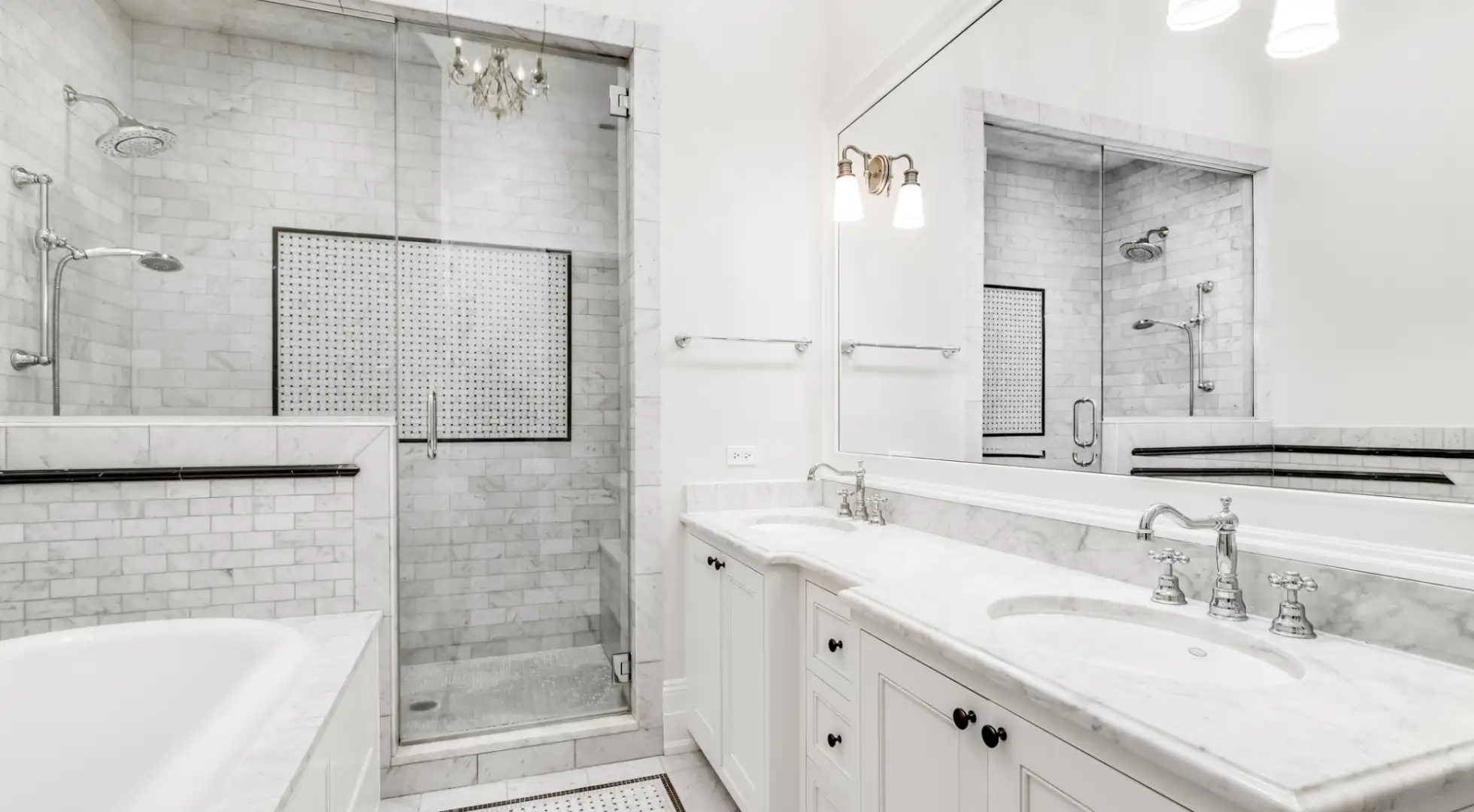Since It Costs So Much to Sell, Use a Cash-Out Refinance To Improve Your Home Instead

Are you thinking about selling because your home doesn’t suit you anymore? If you have equity in your property, it could be smarter to use a cash-out refinance to pay for a major remodel instead.
Plus, some borrowers can reduce their interest rates while their at it, a real win-win situation.
Why Use a Cash-Out Refinance for Home Improvements?
Major home repairs and additions can cost tens of thousands of dollars. When combining several projects, such as doing a complete home renovation, including a new roof and updated HVAC system, it's not uncommon for homeowners to put $100,000 or more into improvements.
If you don’t have the cash available or don't feel comfortable spending that much all at once, you might choose to tap into your home's equity instead.
According to the Census Bureau’s most recent American Housing Survey, 58% of cash-out refinances are used to fund home improvements.
How Could a Cash-Out Refinance Affect My Monthly Payment?
Here are a few examples of how a cash-out refinance could affect your monthly payment depending on whether you're coming from a higher or lower interest rate.
Borrowers With Higher Interest Rates
If you've purchased your home since the second half of 2022, current rates could be lower than your existing mortgage. This is particularly true if your credit profile has improved since your purchase.
For example: You purchased your home with a $275,000 mortgage at 7.5% interest and still owe a balance of $265,000. Your home is currently worth $400,000. You want to borrow $50,000 to remodel your kitchen and bathrooms and can refinance at a lower rate of 6.5%.*
Current Monthly Mortgage Payment | $1,920 |
Cash-Out Refinance Mortgage Payment | $1,990 |
Thanks to a one percent reduction in interest, you could withdraw $50,000 in equity and only pay around $70 more per month.
Borrowers With Lower Interest Rates
Other borrowers, even those locked into a lower rate, may still find making home improvements with a cash-out refinance the most practical option.
For example: You purchased your home five years ago with a $200,000 mortgage at 5.5% interest and owe $175,000. Your home is currently worth $400,000. You want to borrow $100,000 to do a complete renovation and can refinance at a higher rate of 6.5%.*
Current Monthly Mortgage Payment | $1,140 |
Cash-Out Refinance Mortgage Payment | $1,740 |
In this scenario, you’d pay around $600 more monthly to borrow the $100,000 you need. But while there are other options to keep your first mortgage intact (we’ll cover them in just a minute), they typically come with much higher interest rates.
If you're using a 30-year second mortgage that costs 9.5% interest, you'll pay $840 monthly to borrow that same $100,000.
Borrowers With Much Lower Interest Rates
But what if your current mortgage is even lower? Here’s an idea of what you might expect when increasing your interest rate by 2% with a cash-out refinance.
For example: You refinanced your home three years ago with a $150,000 mortgage at 4.5% interest and still owe a balance of $140,000. Your home is currently worth $400,000. You want to borrow $100,000 to do a complete renovation and can refinance at a higher rate of 6.5%.*
Current Monthly Mortgage Payment | $760 |
Cash-Out Refinance Mortgage Payment | $1,520 |
Your monthly payment would double to borrow the $100,000 you need for home improvements. Borrowers making unnecessary renovations may think twice. But for homeowners with repairs or modifications that have to be made, a cash-out refinance may still be the best choice.
If you used a 30-year second mortgage that costs 9.5% interest, you'd pay $840 monthly instead of the extra $760 with a cash-out refinance.
Planning to Move? Consider Customizing Your Existing Home Instead
Anyone thinking about moving should consider a cash-out refinance to customize their current home instead. This is especially true for someone planning to use home equity to fix up their house to sell.
Choosing to sell could cost you more than you think: about 9-10% of your home’s sale price.
A significant portion of this is real estate agent fees, which run 5-6% in most areas. Plus, there are typically escrow, title, and transfer tax costs. And remember the expenses associated with preparing your home for sale and moving once the time comes.
Instead of essentially giving away 10% of your home's equity at closing, you may find it wiser to put that money towards renovations instead. This way, you're holding onto your home longer and adding value for when you eventually sell down the line.
Best Home Improvements to Make With a Cash-Out Refinance
For most borrowers, the best home improvements to make with a cash-out refinance are ones that help accommodate their needs for longer. This might mean adding an extra bedroom or bathroom, replacing a roof, or making other structural repairs.
Apart from necessary improvements, some of the most practical modifications with the biggest bang for the buck might include:
Renovating the kitchen or bathrooms
Making energy-efficient and water-saving updates
Upgrading heating and cooling systems
Redoing your home’s exterior
Adding a deck or porch
Borrowers Without Enough Equity to Refinance
In most cases, you can borrow up to 80% of your home's appraised value with a cash-out refinance. Depending on your down payment and when you purchased your home, you may still need to build up equity.
But suppose you currently have access to funds for home improvements through cash or revolving credit. In that case, consider completing the repairs and doing a cash-out refinance after the renovation.
This strategy works when making improvements significantly increasing the property's appraised value. The funds you cash out can then be used as repair reimbursement.
After making considerable home improvements, you may also be able to refinance to remove private mortgage insurance if you’re currently paying it. If you reduce your interest rate at the same time, this could result in significant monthly savings.
Tax Implications of a Cash-Out Refinance for Home Repairs
Under the current tax code, the Internal Revenue Service (IRS) does not consider funds you receive from a cash-out refinance as income. Instead, it's viewed as additional debt.
You can get a tax deduction for the interest paid on the cashed-out equity if it was used to make capital improvements to your property.
Using a cash-out refinance for home repairs and improvements will likely result in additional tax savings compared to using the funds for other purposes.
Another tax benefit of using a cash-out refinance for home repairs is adding the price of significant improvements to your cost basis. This means you may pay a smaller capital gains tax when you sell.
Note: IRS guidelines can be complex. Consult a tax professional if you need clarification on how financial decisions might affect your tax liabilities.
Cash-Out Refinance Alternatives for Home Improvements
A cash-out refinance makes sense when you can reduce your interest rate and plan to borrow a large amount of equity, often $100,000 or more. But you have other options if you're locked into a favorable interest rate on your first mortgage or only need to access a small amount of funds.
Conventional Renovation Loans
In some instances where major renovations are needed, it makes sense for homeowners to refinance into a conventional fixer-upper loan.
These include:
Fannie Mae HomeStyle Renovation
Freddie Mac CHOICERenovation
Freddie Mac CHOICEReno eXPress
One substantial benefit of a conventional rehab loan is that they are based on your property's anticipated value when complete, not its current appraisal. This can provide access to far more funds when significant improvements are being made.
A renovation loan may also be a practical option for homeowners without enough equity to refinance.
On top of conventional home improvement loan options, there are government-backed rehab loan programs like the FHA 203(k) and VA Renovation.
It’s worth noting, however, that unlike a cash-out refinance, you don’t receive home improvement funds at closing. Instead, with a renovation loan, the money is released directly to lender-approved contractors after completing milestones in their scheduled work.
Home Equity Loans and Lines of Credit
Home equity loans and lines of credit are both types of second mortgages. They let you tap into your equity without affecting your existing first mortgage.
While they both come with higher interest rates than a cash-out refinance, they may make sense if you only want to borrow a small amount or have a favorable interest rate on your first mortgage.
Home equity loans are similar to a standard mortgage. You borrow a fixed amount over a set period and make monthly payments like any other loan.
With a home equity line of credit, however, you can access funds as needed over time and pay interest only for several years.
Personal Loans and Credit Cards
Personal loans and credit cards are often an option for funding small and mid-sized home repairs and improvements. You can access the money you need quickly, unlike a cash-out refinance, which can take weeks or longer.
The debt is generally unsecured, providing more protection for your home if you face financial hardship during repayment.
However, this type of funding often comes with much higher interest rates than property-backed options. For long-term financing, it is likely wise to look elsewhere.
But personal loans or credit cards can make sense if you need to borrow a relatively small amount of money for a short time.
If you plan to fund your home improvements like this, watch for credit cards with low introductory rates (and pay off your charges before the promotional period ends) or low or zero-cost balance transfer options.
Using a Cash-Out Refinance to Fund Home Improvements
Making home improvements with a cash-out refinance can be one of the wisest ways to use your home's equity. You're making your home more livable and likely increasing its value at the same time.
To discover how much equity you can cash out for home improvements and repairs, apply for a quote from an experienced mortgage professional.
*Note: These are basic estimates based on example rates and don't include variable factors like taxes, insurance, and closing costs. Talk with a lending professional for a more comprehensive idea of how a cash-out refinance may affect your payments.




